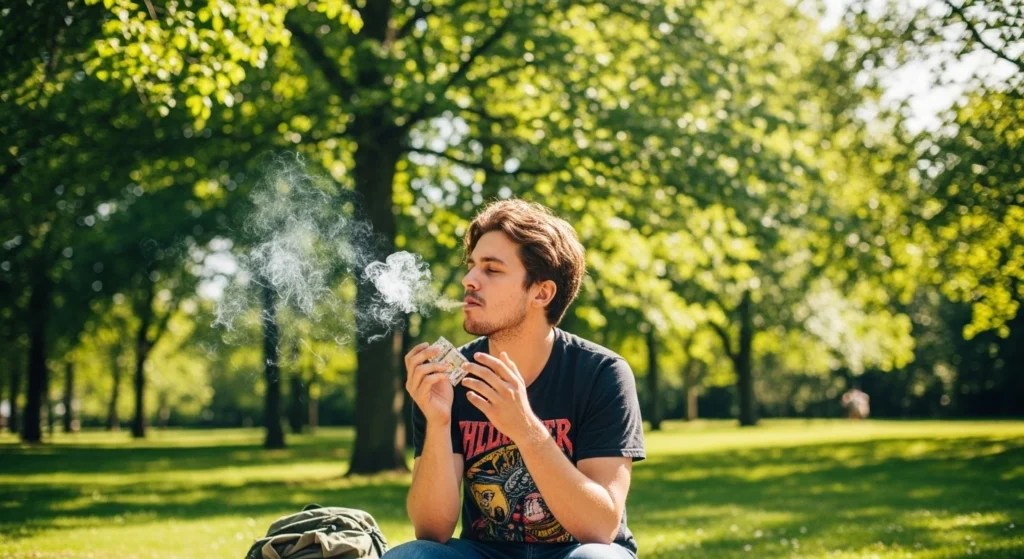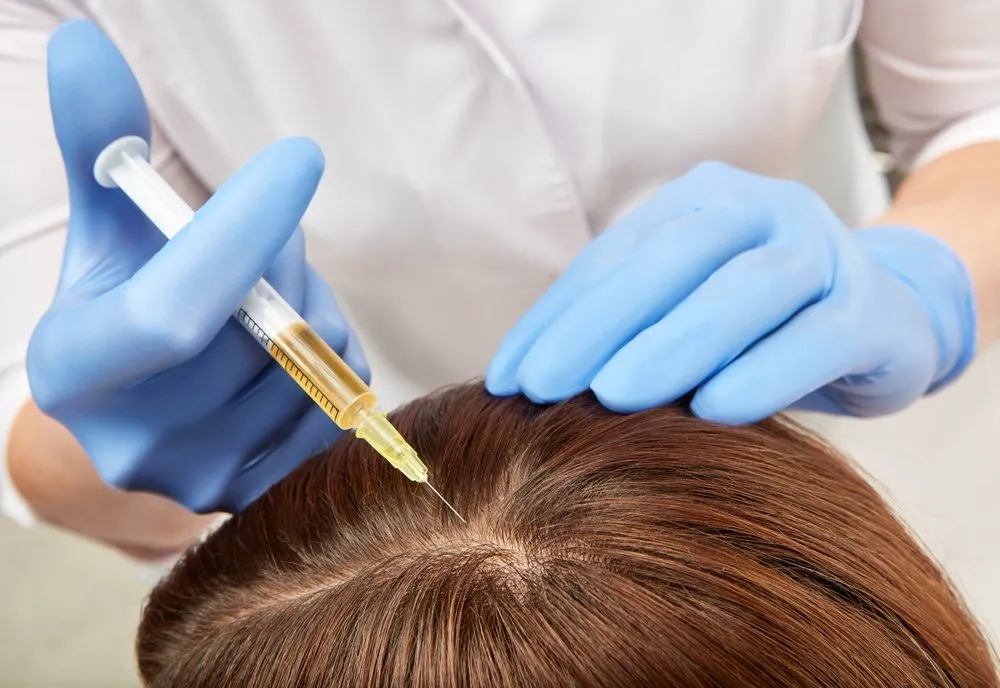If you’ve ever wondered, “Does smoking weed cause hair loss?”, you’re not alone. Many cannabis users have noticed changes in hair thickness or shedding and want clear, science-backed answers.
In this blog, we explore whether weed directly causes hair loss or if it’s a result of indirect factors like stress, poor nutrition, or hormonal shifts.
You’ll learn what current research says, what experts think, and how to protect your hair while making informed lifestyle choices. Let’s separate myths from facts.
Understanding the Basics of Hair Growth & Loss
To understand how cannabis may impact hair, it’s important to know how the hair growth cycle works.
Hair Growth Cycle: The Three Phases
- Anagen (Growth phase): Lasts 2–6 years. The longer this phase, the longer the hair.
- Catagen (Transition phase): A brief 2–3 week phase where the hair follicle begins to shrink.
- Telogen (Resting/shedding phase): Lasts about 3 months before the hair falls out and the cycle begins again.
Hair loss occurs when this cycle is disrupted — either prematurely or by shortening the growth phase.
Common Causes of Hair Loss
- Genetics (androgenetic alopecia)
- Hormonal imbalances (e.g., elevated DHT)
- Stress and trauma (telogen effluvium)
- Poor nutrition and vitamin deficiencies
Is There a Direct Link Between Smoking Weed and Hair Loss?

THC and Hair Follicles
Tetrahydrocannabinol (THC), the psychoactive compound in cannabis, interacts with cannabinoid receptors found in skin and hair follicles. Some in vitro studies suggest THC may inhibit hair shaft elongation and promote hair follicle regression, which could disrupt the natural growth cycle.
Smoking and Blood Circulation
Like tobacco, smoking weed may reduce oxygen supply to the scalp due to carbon monoxide exposure. Poor circulation means fewer nutrients reach hair follicles, leading to weakening or shedding over time.
The Role of DHT (Dihydrotestosterone)
Cannabis may indirectly influence hormonal levels. Some studies have linked heavy marijuana use to elevated testosterone, which can convert into DHT—a hormone that causes hair follicle shrinkage in people genetically prone to male or female pattern baldness.
Indirect Mechanisms: Stress, Cortisol, and Lifestyle Habits
Stress and Cortisol Spikes
While some use weed to reduce stress, for others, cannabis can increase anxiety and cortisol, especially in high doses or with THC-sensitive individuals. Chronic stress may trigger telogen effluvium, a temporary form of hair shedding.
Nutritional Deficiencies
Cannabis use is known to alter appetite. While it may increase hunger in some, others may skip meals or opt for low-nutrient food. Lack of iron, vitamin D, zinc, or biotin can all contribute to hair loss.
Disrupted Sleep Patterns
THC may interfere with deep sleep stages and REM cycles. Sleep disruption can hinder cell regeneration, including the cells responsible for hair growth.
What the Research Shows
THC’s Inhibitory Effects on Hair
A 2007 lab study showed that THC reduced hair shaft elongation and induced premature entry into the catagen (regression) phase in isolated human hair follicles. This suggests potential for disruption, though human trials are limited.
Hormonal Impacts
Some surveys show higher testosterone levels in heavy marijuana users, which could indirectly increase DHT levels—a known contributor to pattern baldness.
Clinical vs Anecdotal Evidence
There’s still a lack of large-scale clinical trials. Much of what we know is based on preliminary research, observational studies, and user testimonials.
Preventive Measures & Alternatives for Weed Users
If you consume cannabis and are worried about your hair, here’s what you can do:
1. Switch from Smoking to Edibles
- Avoid heat and combustion.
- Reduce exposure to scalp-damaging toxins.
2. Manage Stress with Alternatives
- Try yoga, meditation, or therapy to regulate cortisol.
- Avoid high-THC strains if you’re prone to anxiety.
3. Focus on Nutrition
- Eat protein-rich meals.
- Add hair-healthy nutrients: biotin, vitamin D, omega-3s, and zinc.
Proven Hair Loss Treatments
Even if cannabis is a contributing factor, hair loss can often be reversed or managed with proper treatment.
FDA-Approved Options
- Finasteride: Blocks DHT; effective for male-pattern baldness.
- Minoxidil: Improves blood flow; suitable for both men and women.
Advanced Therapies
- PRP (Platelet-Rich Plasma): Uses your own blood to stimulate hair follicles.
- LLLT (Laser Therapy): Promotes regrowth via red light wavelengths.

When to See a Specialist
- If shedding lasts more than 6 months.
- If there’s visible thinning at the crown or hairline.
Timeline & What to Expect
After reducing or stopping cannabis use and starting hair-friendly treatments, here’s a general recovery timeline:
| Timeline | Expected Improvement |
|---|---|
| 1 Month | Reduced shedding, fewer strands in shower |
| 3 Months | Early signs of regrowth, less visible scalp |
| 6+ Months | Noticeable density improvement and thickness |
FAQs
Does every weed user experience hair loss?
No. Genetics, dosage, frequency, and overall lifestyle play a role.
How long after quitting weed will hair grow back?
You may notice reduced shedding in 1–3 months and regrowth after 3–6 months.
Can CBD or hemp oil help with hair growth?
CBD may reduce inflammation and support scalp health, but more research is needed.
Is weed-related hair loss permanent?
Usually not. If caught early and managed well, regrowth is possible.
Do women experience weed-related hair loss, too?
Yes, particularly if hormonal imbalances or nutrient deficiencies are involved.
Take Your Next Step
Concerned about hair loss and cannabis use?
Book a personalized consultation with Dr. Rana Irfan in Islamabad today. With expert diagnosis and tailored treatment, you can take the first step toward healthier, fuller hair.
